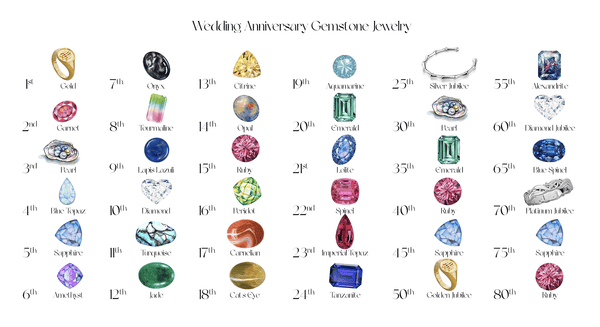White South Sea Pearls
Silver and White South Sea Pearls: The Epitome of Luxury
Silver and white South Sea pearls are among the most luxurious and sought-after pearls globally. Renowned for their exceptional size, luster, and rarity, these pearls stand as a testament to nature's beauty and meticulous cultivation.

Characteristics
Color
South Sea pearls display a stunning range of colors from silver to white, often with overtones of rose, cream, or gold. The silver hue is particularly rare and highly prized.
Size
These pearls are celebrated for their impressive size, typically ranging from 9mm to over 20mm. Silver and white pearls are often on the larger end of this spectrum due to the extended cultivation period required to achieve these shades.
Luster
South Sea pearls boast one of the highest lusters among all pearl types. Silver pearls, in particular, can exhibit a metallic sheen that sets them apart.
Shape
While perfectly round pearls are the most valuable, South Sea pearls also come in oval, button, drop, and baroque shapes. Round silver and white pearls are exceptionally rare and, therefore, command a higher value.
Surface
High-quality South Sea pearls have minimal blemishes. However, natural surface imperfections are more common in larger pearls due to the challenges of nacre formation over a larger surface area.

Origin
Cultivation Locations
South Sea pearls are primarily cultivated in the pristine waters of Australia, Indonesia, and the Philippines. These regions provide the ideal conditions for the growth of the large Pinctada maxima oysters, also known as gold-lip and silver-lip oysters.
Cultivation Process
The cultivation process involves inserting a bead nucleus and a piece of mantle tissue into the oyster. Silver and white pearls require 2 to 4 years or more to develop, as the oysters produce nacre at a slower rate to achieve these hues.
Jewelry Applications
Classic Elegance
Silver and white South Sea pearls are staples in high-end jewelry, often paired with platinum or white gold to enhance their luxurious appeal.
Versatility
While traditionally associated with classic styles, these pearls are increasingly incorporated into modern designs, thanks to their unique luster and size.
Authentication and Quality
Grading
South Sea pearls are graded based on five key criteria:
-
Luster: The pearl’s glow, often described as “orient,” results from the interaction of light with its nacre layers.
-
Complexion: High-quality pearls have minimal surface imperfections, though flawless pearls are rare.
-
Shape: Round and teardrop-shaped pearls are the most coveted, though baroque shapes offer unique beauty.
-
Color: Pearls with pink overtones, especially white ones, are particularly valuable.
-
Size: Larger pearls, often exceeding 20mm, are exceedingly rare and valuable.
Buying Tips
When purchasing South Sea pearls:
-
Seek pearls accompanied by certificates from reputable gemological labs.
-
Assess the luster in person whenever possible.
-
Consider the pearl’s intended use in jewelry or display.

Australian South Sea Pearl Farming
Pristine Locations
Stretching from the Cobourg Peninsula near Darwin to Dampier in Western Australia, Australian pearl farms are situated in clean, pollution-free environments.
Sustainable Practices
-
Diving and Harvesting: Divers hand-pick Pinctada maxima oysters from the seabed, ensuring minimal environmental impact.
-
Nucleus Implantation: On board vessels, technicians implant a bead nucleus made from Mississippi River mussel shells, which are structurally similar to natural pearls. The oysters are then returned to the ocean.
-
Oyster Care: Oysters are cleaned every 10-14 days during the 2-3 years of cultivation to maintain their health.
-
Harvesting: After the cultivation period, oysters are carefully opened to extract the pearls while minimizing stress, allowing for future cultivation cycles.
Grading Standards
Australian South Sea pearls are graded according to the “Five Virtues” system:
-
Lustre: Exceptional luster results from symmetrical nacre layers that create a brilliant glow.

-
Complexion: Pearls with few or no blemishes are highly valued.

-
Shape: Round and teardrop pearls are the most desirable, while unique shapes like baroque and Keshi pearls cater to individual tastes.

-
Color: White pearls with pink overtones are the most valuable, while silver, cream, and gold shades offer variety.


-
Size: These pearls typically range from 11mm to 16mm, with specimens over 20mm being exceedingly rare and valuable.

Circle Pearls
A circle pearl has a rounded outline and can come in a variety of shapes. This distinctive characteristic gives this type of pearl an appealing individuality; it is perfect for those who want a unique, one-of-a-kind design.

Keshi Pearls
Keshi Pearl is a cultured pearl that does not have a solid nucleus implanted inside. 'Keshi' is a Japanese word meaning 'poppy seed', used to describe this type of small pearl. These rare gems are highly sought after for their vibrant colors, high luster, and unique natural shapes. Keshi pearls typically range in size from 2mm to 8mm but can sometimes be found in larger sizes.

Silver and white South Sea pearls are the pinnacle of elegance and rarity. From their meticulous cultivation process to their exquisite beauty, these pearls are not just adornments but timeless investments and works of art. Whether you seek classic sophistication or modern flair, South Sea pearls offer unmatched versatility and appeal.
No products in this collection




